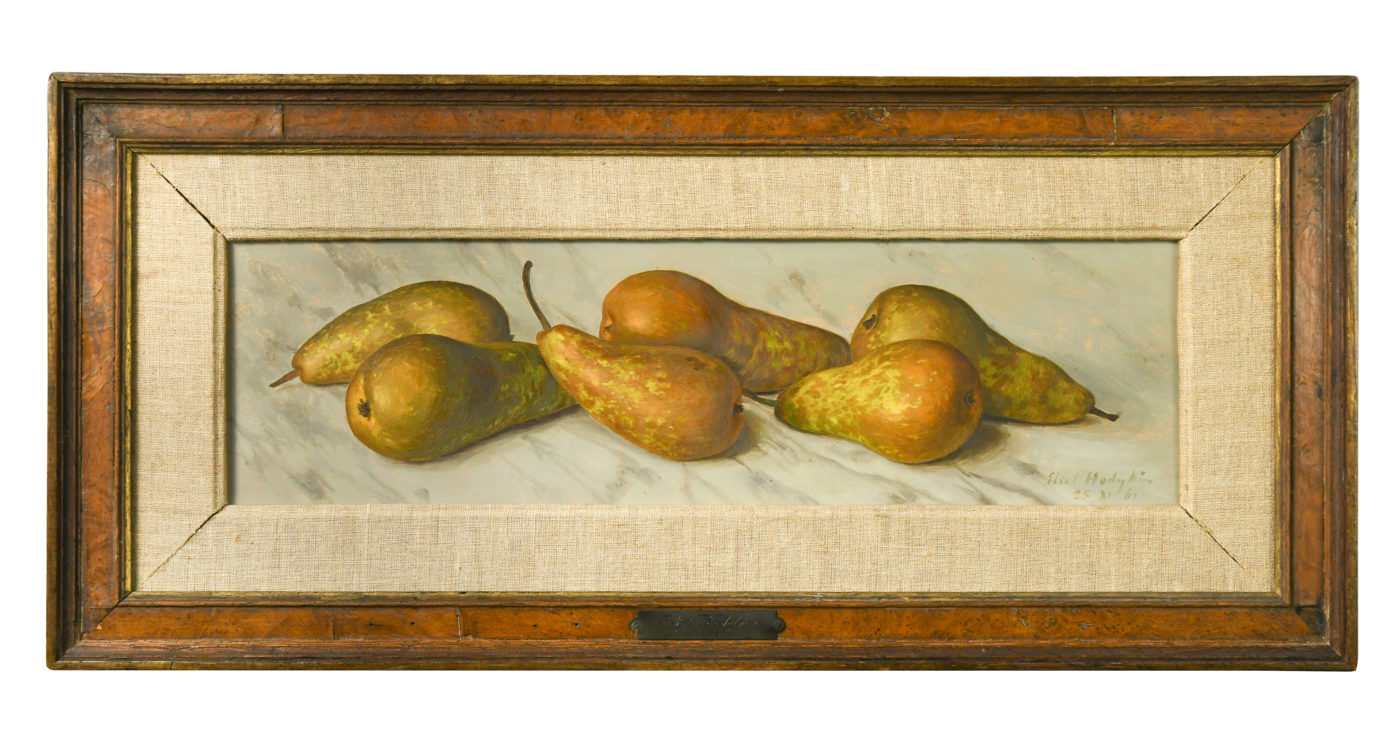Born at Purley-on-Thames, near Pangbourne, Berkshire, into a Quaker family related to Roger
Fry, Eliot Hodgkin was a cousin of the abstract painter Howard Hodgkin (1932-2017). He was
educated at Harrow School and began his artistic life at the Byam Shaw School of Art,
continuing at the Royal Academy Schools under Francis Ernest Jackson.
Although in his early career Hodgkin painted in oil, most of his best-known works are highly
detailed still lifes executed in tempera, which he began using shortly after his first one man
exhibition at Picture Hire Ltd. in 1936. In 1959, he turned down the opportunity of becoming
a Royal Academician but continued to exhibit at the Royal Academy throughout his career,
showing a total of 113 paintings at the RA Summer Exhibitions between 1934 and 1981.
Throughout his career he had one man shows at various galleries, including the Leicester
Galleries, Royal Society of British Artists, Arthur Jeffress Gallery, Agnew’s, Wildenstein and,
in New York, at Durlacher Bros. Also a writer, Hodgkin’s books include She Closed the Door
(1931), Fashion Drawing (1932) and A Pictorial Gospel (1949). Owing to failing eyesight, Hodgkin stopped painting in 1979.
